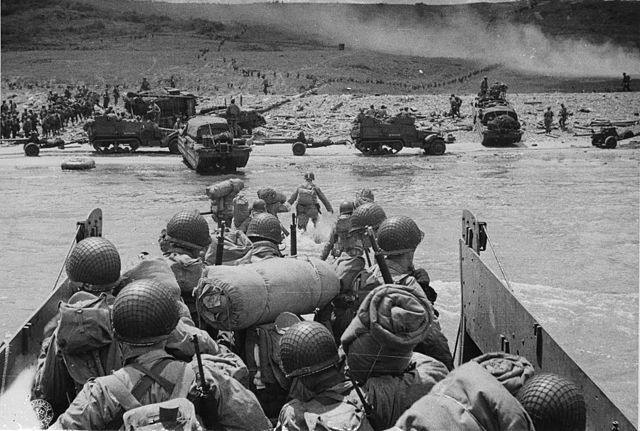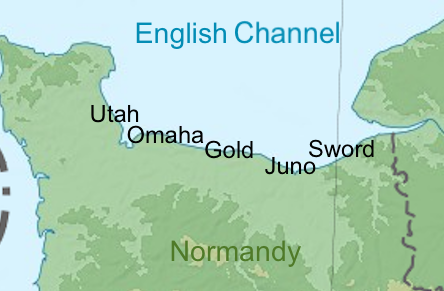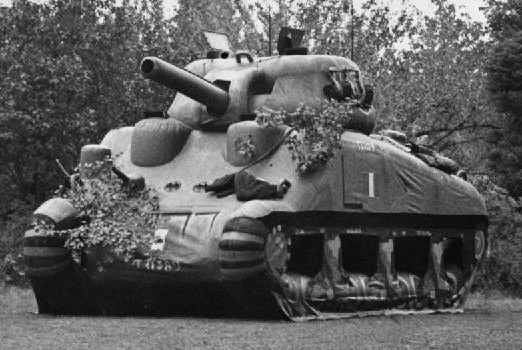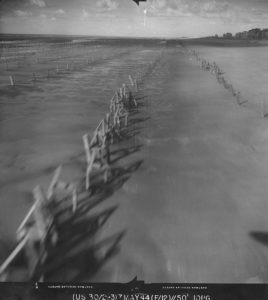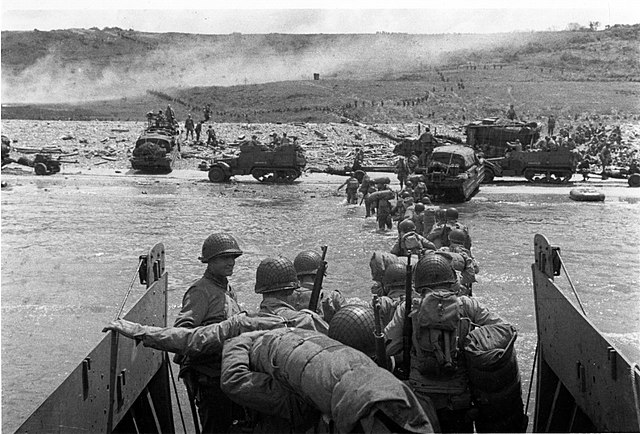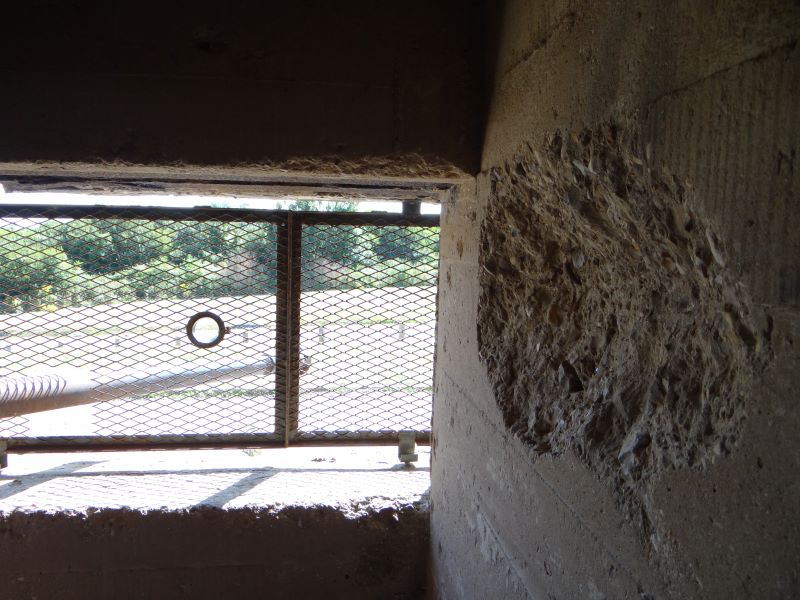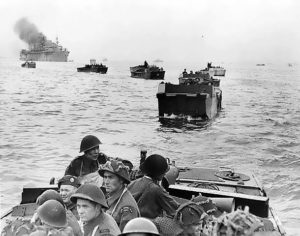Tour Normandy Beaches of D-Day with this Self-Guided Drive
Touring the Normandy beaches in a full loop will take you about 3 hours. Of course, you’re going to want to stop and visit the many museums, memorials and cemeteries along the way, so start early or break it up over a few days so you aren’t rushed.
Caen, on the eastern side of the beach area is a good home base. It is a large town and easy to reach by train from Paris. Car rental is also available near the train station. Alternatives would be Bayeux (more central) or Carentan (western side).
Already have a sense of what D-Day was all about? Then bypass the historical primer and Skip to the Trip! Looking for a particular beach? Select it from the options below!
What was D-Day?
By 1944, Adolf Hitler had a strong hold over France, having captured Paris in 1940. The Allies had also evacuated a large number of troops from Dunkirk, France in 1940. Therefore, getting troops back on the continent en force was essential to win the war.
Code-named “Operation Overlord”, the invasion of Normandy during World War II had taken over a year to plan & prepare for. The term “D-Day” refers to the day an operation will begin. Conversely, “H-Hour” is the time an operation begins. D-Day for Overlord was set as June 6, 1944.
Why Normandy?
The northern coast of France was a logical choice since it is directly across the English Channel from England. To better choose the specific landing points, the BBC asked the public for any photographs of the coast and millions of pictures and postcards poured in. In the days before satellites and Google earth it was a pretty smart way to get detailed images!
Another benefit of soliciting public photos was that the Allied forces could compare past images with pictures they were taking by air. Comparing photos, they could better understand what reinforcements the German army had put in place.
Operation Fortitude - the Big Diversion!
The town of Calais is geographically closer to England than Normandy, so it was reasonable to think the invasion may happen there. The Allied forces played into this belief with a false invasion called “Operation Fortitude”. A fake army, inflatable tanks, false radio broadcasts, double-agents feeding false information to Germany and more all fed into the belief that the invasion would be further east along the coast of France.
Incredibly, it worked.
Hitler pulled troops out of France to defend the coast further east and into Norway. Even after the real invasion began, he still felt it was a ruse and would not move troops to Normandy.
This did not mean, however, that the beaches were undefended. There were still heavy fortifications on the cliffs and landing implements on the beach to prevent troops from landing directly on the shore.
June 6, 1944 - the Invasion Begins
Before troops would land on the beaches, paratroopers were dropped behind enemy lines in the early morning of June 6. Their job was to secure the town of Saint Mere Eglise and key routes that led to the beaches.
A naval bombardment also preceded the landing. Battleships hurling projectiles the size of small cars joined with cruisers and destroyers to pummel coastal defenses to offer more protection to the troops.
Utah Beach (USA)
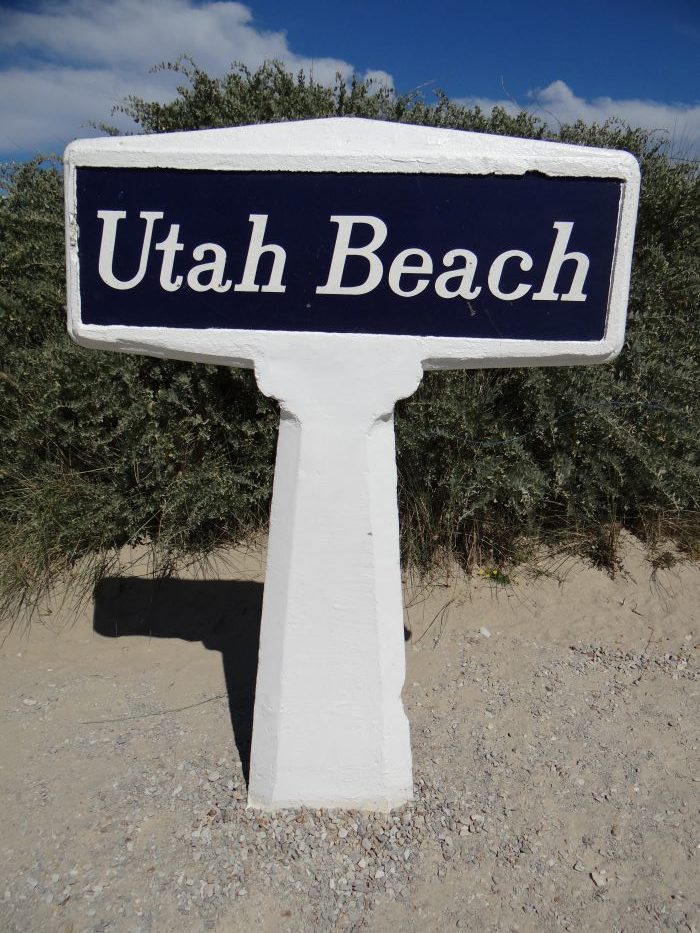
The first stop on this tour of Normandy beaches is Utah, the furthest to the west. From Caen it’s about an hour drive. I recommend parking at the Utah Beach museum and exploring the museum and beachfront from there.
Utah Beach was assigned to the Americans and was the first beach landing that day. The first wave of Infantry arrived at 6:30 am and the second wave 5 minutes later. Unfortunately, the strong currents had pushed them to land 2,000 yards further south than they were supposed to, making their dangerous path even longer.
Three German Infantry Divisions were assigned to this region, and their fortifications included concrete pillboxes, tank turrets and artillery batteries further inland.
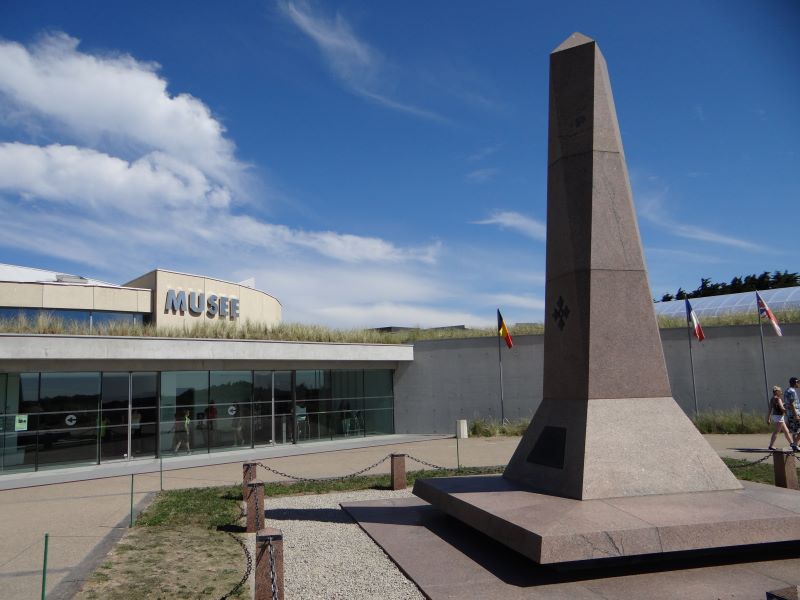

The beach was secured by the end of the day, but they weren’t able to make as deep of a push inland due to having to make up for landing at the wrong place.
Today, the beach is a beautifully calm place with families enjoying the sun and kids playing in the sand.

Near Utah Beach: Saint Mere Eglise
I strongly recommend making time to visit Sainte Mere Eglise while you are in the area. It’s only 15 minutes from Utah beach. Here you can visit the Airborne Museum to learn more about the Paratrooper assault that led the D-Day invasion.
The town of Saint Mere Eglise was a crucial part of Overlord for its strategic location and roadway access. Paratroopers sent in overnight were supposed to take the Germans by surprise and capture the town. However, Paratroopers dropping in around midnight did not land unnoticed.
Unfortunately, a fire at a house behind the church had broken out earlier in the evening and the townspeople were up fighting the fire. As the town was under German control and curfew, German soldiers were also there, observing the fire.
They quickly realized the paratroopers landing all around them signaled invasion and the element of surprise was gone.
Perhaps the most famous story of the episode was of Paratrooper John Steele, whose chute got hung up on the roof of the church.
You can see a recreation of the stranded solider hanging from the church today. Steele was stuck there for three hours playing dead before 2 Germans spotted him and cut him down, taking him prisoner.
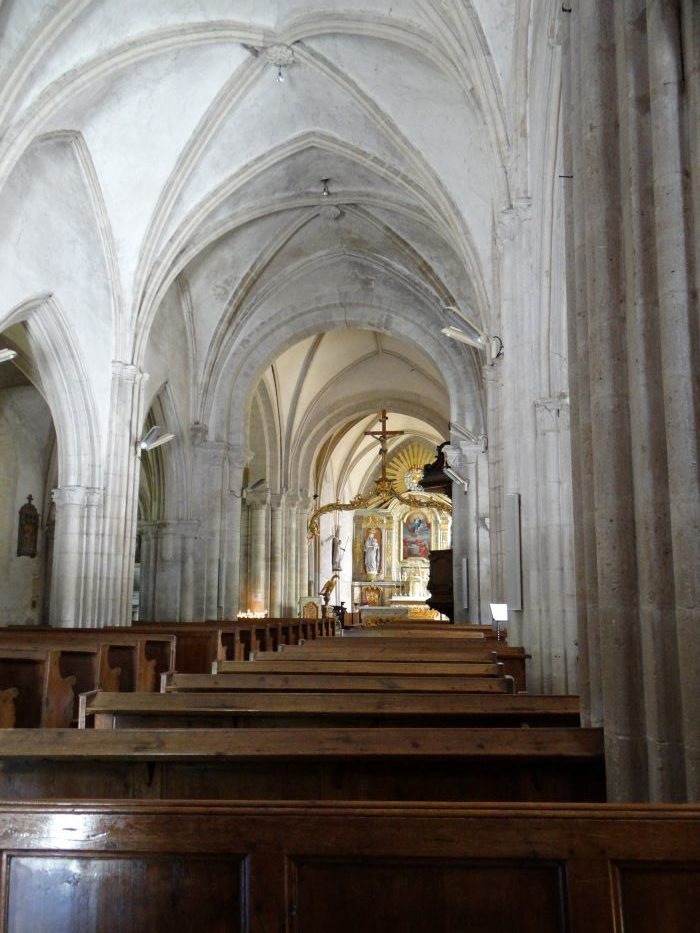
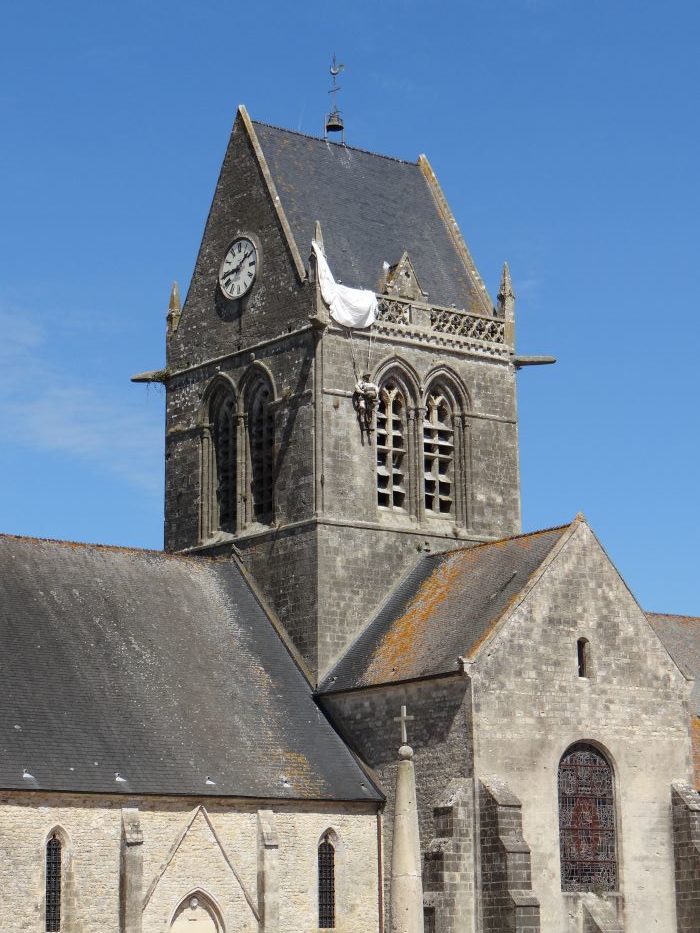
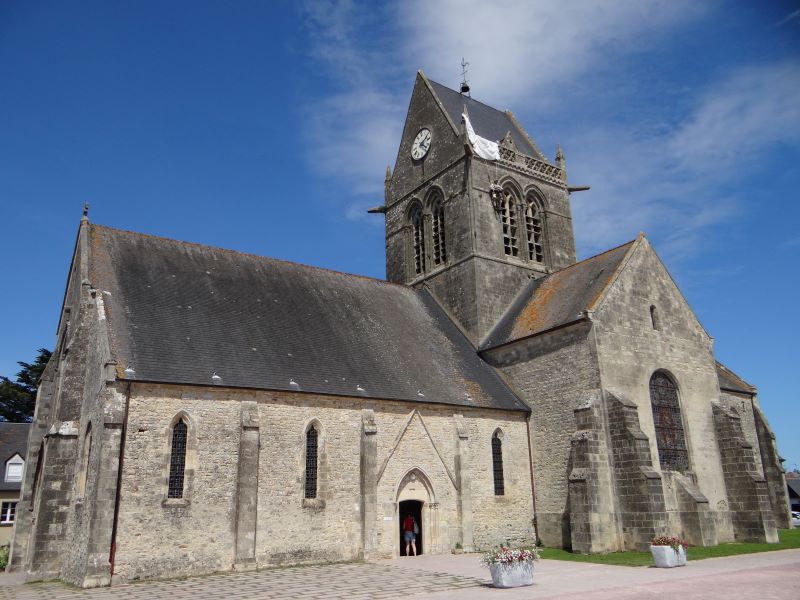
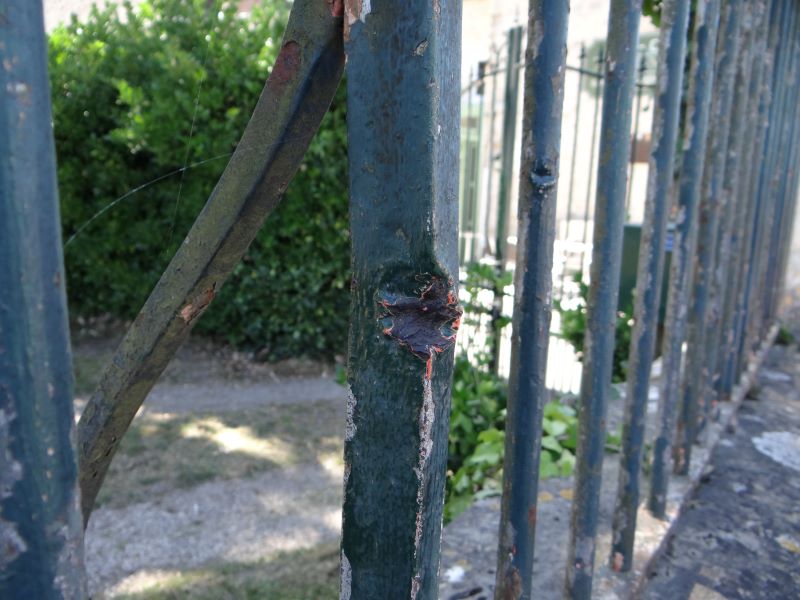
Other activities in the Utah sector:
Omaha Beach (USA)

It’s about a 40 minute drive from Utah to the Omaha Beach area. Omaha Beach was also designated for the Americans, and nearly two thirds of all US troops who landed on the beaches of Normandy landed at Omaha.
The Germans realized how strategic the area was, so Omaha was heavily fortified by German defenses. Metal ramparts, barbed wire, concrete bunkers, sea walls, mines, tank ditches and more contributed to significant casualties. The sector became known as “Bloody Omaha”.
The water off the shore has a number of sand bars, which prevented landing craft from going right up to the shoreline. As a result, troops had to wade through the water, which was shoulder-height for most men. Many drowned, weighed down by their heavy gear made even more cumbersome once wet.
Many of the tanks and artillery pieces did not make it to the beach, leaving the troops even less protected. Fighting continued throughout the day, and it wasn’t until nightfall that the beach was finally under Allied control.
Today, the beaches are again quiet and calm. There was a man tending a small driftwood fire on the beach. The guide we were with commented on what a bad idea that was, given the amount of ammunition that still turns up on the beach and gets buried in the sand.


Near Omaha Beach: Point du Hoc
If you have time, definitely take a side trip to Point du Hoc. Point du Hoc is a rocky outcrop jutting into the Channel. During the war, Germany had it heavily fortified and manned with long range artillery, capable of reaching Omaha beach 3 miles to the east. These guns pummeled the beaches, contributing to the “Bloody Omaha” moniker.
Members of the 2nd Ranger Batallion had to scale the 100 foot cliffs and take out the guns. They were able to capture the area but had to hold it for two days with less than 100 men before reinforcements arrived.
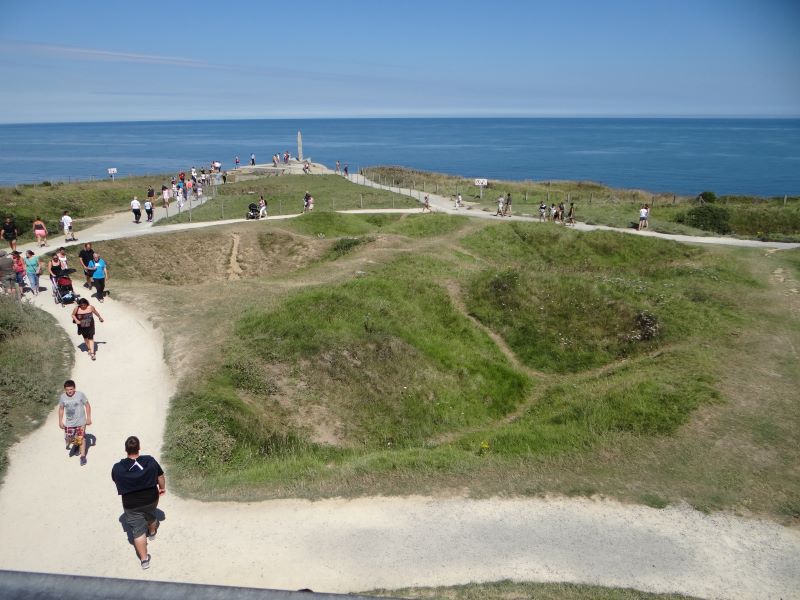
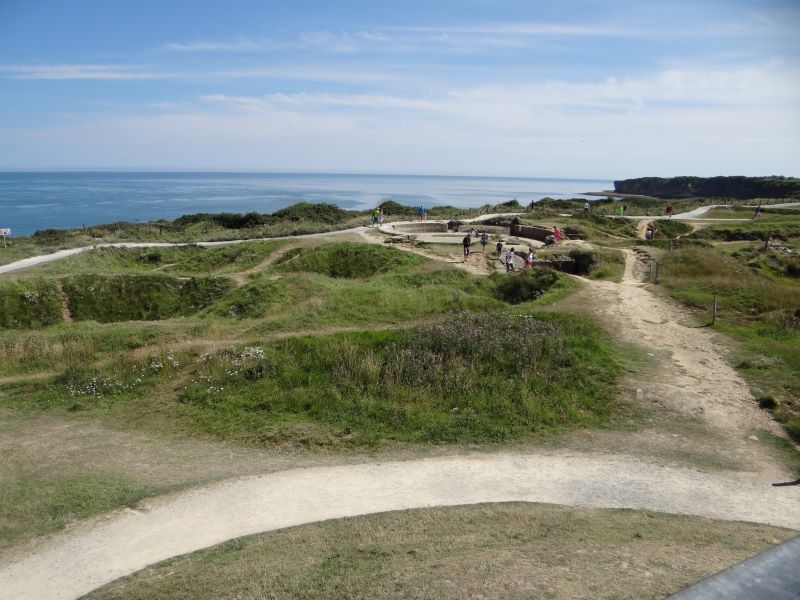
Near Omaha Beach: Normandy American Cemetery
There’s another stop I highly recommend on your tour of Normandy beaches: the Normandy American Cemetery. You’ll already be parked at the lot it shares with the museum and you’ll pass it on your way to the beach, so you can’t miss it!
More than 9,000 military casualties are buried here; most died on D-Day or fighting on the days that followed. The site is meticulously maintained by the American Battle Monuments Commission, and I can’t say enough about their care and attention. There is a visitor center, memorial, chapel and guided pamphlets available to help navigate the site.
While we were there, the chimes struck up “Anchors Aweigh” for the US Navy and it was incredibly moving. I took some video at the time it still makes me tear up when I watch it and look over the rows of white crosses and think of the sacrifices made during the war.
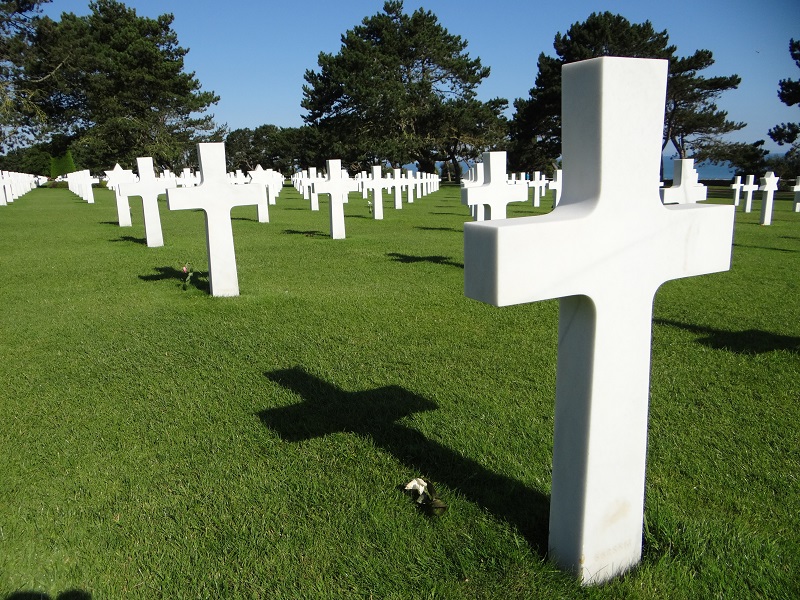
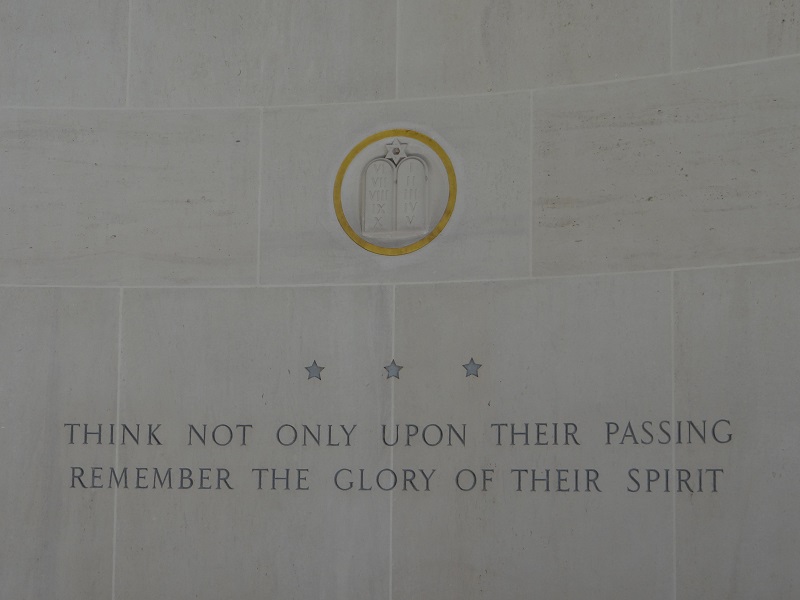
Locating plots
The ABMC has a full list of those interred online, and you can look up the location of anyone in the cemetery. The plots are marked on a grid system, so it is very easy to find any specific grave you wish to see.
There is a WWI casualty at the cemetery. Quentin Roosevelt (the youngest son of President Theodore Roosevelt) was an airman shot down during the first World War. He was buried near the site of the accident but moved in the 1950’s to rest near his brother at the Normandy American Cemetery.
His brother, Theodore Roosevelt Jr also served in WWI and was still in the military during WWII. He requested to be with his troops on D-Day in the first wave to support and inspire them, despite being in his 50’s by this time. He survived the landing at Utah Beach, but died of a heart attack some days later.
The Roosevelt brothers are only one of 45 other sets of brothers buried together here.

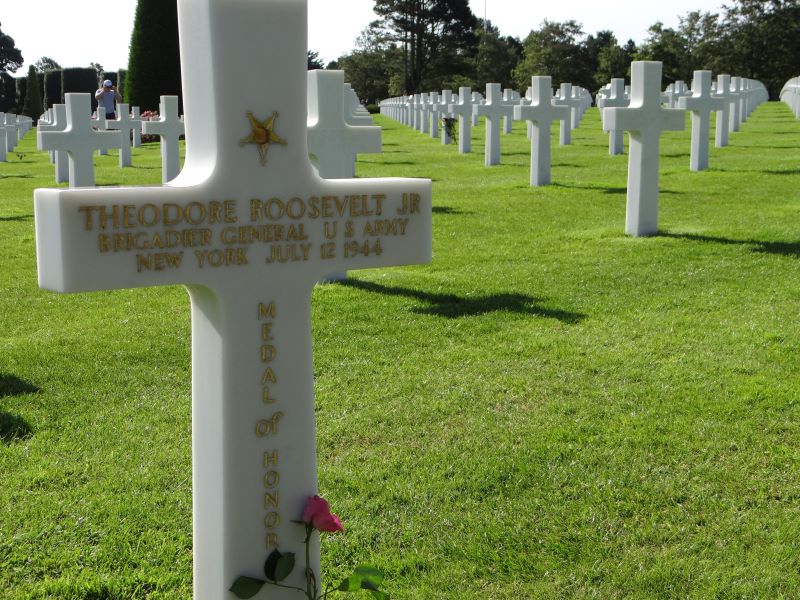
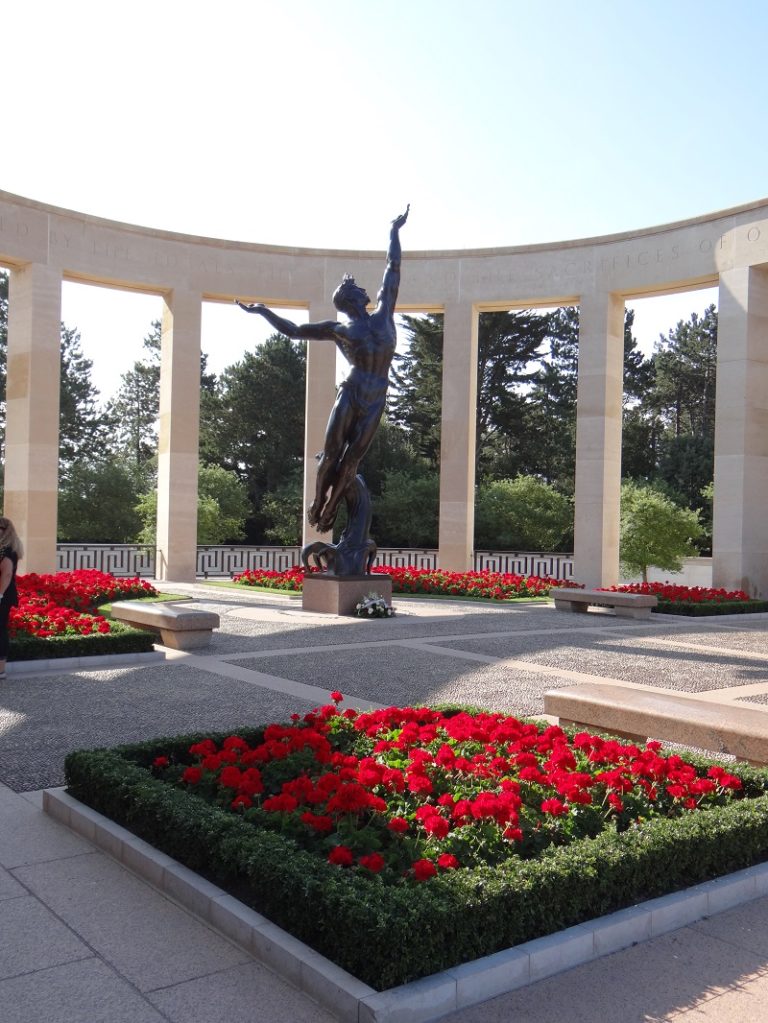
Other Activities in the Omaha Sector:
Gold Beach (Britain)
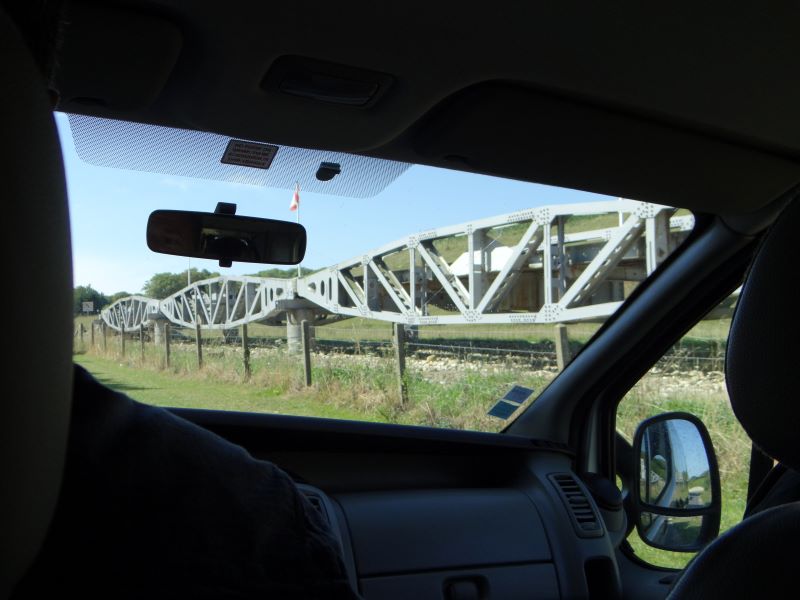
From Omaha Beach to Gold Beach is about half an hour drive.
The British were also successful in taking Gold, their assigned beach, by the end of the day on June 6. Gold was important for the ability to unload troops, materials and supplies.
Once it was secure, the arrival of man-made portable harbors known as “Mulberries” began to arrive. The Mulberry was designed as a floating harbor so that equipment could be unloaded no matter the height of the tide.
You can glimpse some of the remaining Mulberry structures as you drive around the area.

Other Activities in the Gold Sector:
Juno Beach (Canada)
It will only take you 20 minutes to get to Juno Beach from Gold Beach.
H-Hour for Juno Beach was 8:05 am on D-Day. The landing here was unique for the day because an armored division was tasked with taking the beach.
Defenses on Juno Beach were lighter than the others since Germany did not believe Allied landing craft could make it past the rocky hazards offshore.
Nevertheless, they still mined the area and as the tide began to rise, Canadian tanks became more susceptible to encountering the mines since they could not see them under the waterline.
Fighting lasted into the afternoon before the beach was secured and the Canadians could rendezvous with their British counterparts on either side.
Other Activities in the Juno Sector:
Sword Beach (British)
It will only take you 20 minutes to get from Juno Beach to the final stop on this tour of Normandy Beaches: Sword Beach.
Soft mud and rocky shores worked to the German’s advantage as it made landing and advancing difficult for British troops who landed on D-Day.
The East Yorkshire Division took 2,000 casualties in the first hour, similar to US casualties sustained at Omaha Beach.
Eventually, British troops gained a foothold on the beach. However, late in the afternoon the Germans launched a counter-attack supported with tanks but it did not break the British position.
By the end of the day, British troops from Sword had made it within 3 miles of their target, Caen.
Other Activities in the Sword Sector:
Wrapping up your Tour of Normandy Beaches
From Sword Beach, it’s 25 minutes back to Caen. By the end of what is sure to be a long day (if you do this whole trip in a day) – being close to your hotel at the end is going to be a welcome feature!
If you break up the trip over a weekend, or longer, then Bayeux may be the better place to stay since it’s more central to the beaches.
Other Activities in Caen:
Other Ways to Tour the Beaches of Normandy
Guided Tours
I realize not everyone is going to want to drive themselves around, especially if it’s your first trip to the area.
I have taken a guided tour with Oliver from “Normandy44” and it was excellent! He took us to places not included in this list and had some great stories to share along the way.
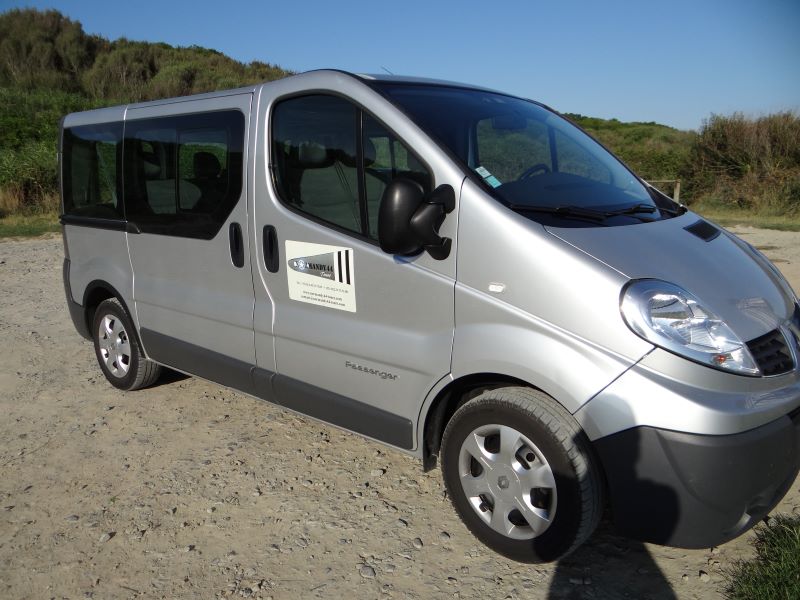
Post Sources:
Normandy Tourism website. Accessed 30 May 2021.
National D-Day Memorial website. Accessed 30 May 2021.

